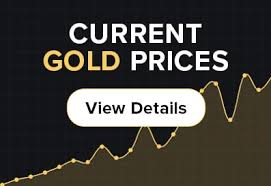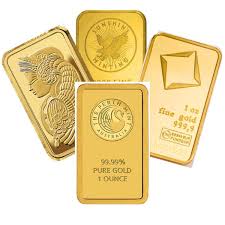
Gold price today displays the live spot rate for gold bullion, allowing you to monitor movements and determine the ideal moment to invest.
We deliver up-to-the-minute gold price information along with historical charts so you can track price fluctuations over time and recognize long-term market patterns.
On GoldCore’s gold price chart, you can select from four different currencies beneath the graph: US Dollars, Euros, British Pounds, and Australian Dollars. GoldCore shows a live spot price per ounce in the US, with gold ready for immediate purchase or secure storage. The latest spot rate per ounce is shown at the top of this page in US dollars. Although gold is primarily traded worldwide in US dollars, prices can be converted into other currencies using the relevant exchange rates.
Read more about Global trade and supply chain
Read more about Gold Price Rates Per Gram
Gold price
Gold is recognized as one of the most treasured and in-demand precious metals, widely utilized in both jewellery and electronic components. Throughout history, it has served as a dependable safe-haven asset during periods of economic instability, maintaining its worth for centuries and making it a trusted investment in uncertain conditions.
Because of its enduring intrinsic value, gold adds effective diversification to investment portfolios, helping to lower overall risk. Its market value is shaped by numerous economic and geopolitical elements, including inflation, interest rates, and fluctuations in the US dollar.
Since gold is priced in US dollars, shifts in the dollar’s strength can influence its price. A weaker dollar usually benefits gold, increasing demand for it as a protective asset. On the other hand, when the dollar gains strength, gold may appear more costly to buyers using other currencies, potentially dampening demand. Expectations of rising inflation, lower real interest rates, or declining stock markets often encourage investors to turn to gold as a safeguard, pushing its price upward.
Gold price chart
We frequently refresh our charts for gold, silver, and other precious metals in multiple currencies, enabling investors to make informed choices about when to buy or sell. The chart makes it simple to recognize price patterns over time, stay informed about market shifts, and view spot prices instantly. Our gold price chart displays the live spot rate for gold bullion, giving you the ability to follow price movements and determine the ideal time to invest.
We offer live gold price updates along with historical records so you can analyze how values have shifted over time and spot long-term trends.
On the GoldCore gold price chart, you can choose from four currencies displayed beneath the chart: US Dollars, Euros, British Pounds, and Australian Dollars.
For those interested in purchasing gold in ounce measurements, GoldCore provides a selection that includes 1 oz coins as well as 1 oz and 10 oz gold bars.
Gold price per ounce
Foreign exchange markets can significantly influence the value of gold. Since gold is usually priced in U.S. Dollars, a weaker dollar often makes gold cheaper for international buyers, while a stronger dollar can make it more costly abroad. This connection is often reflected in gold prices: when the dollar index falls sharply, gold often climbs, and when the dollar strengthens, gold frequently declines.
Interest rates also play a key role in gold’s performance. Because gold provides no yield or interest, its price can struggle during times of high or rising rates. Conversely, when interest rates are very low, gold may gain an advantage, as the cost of holding a non-yielding asset is minimal. Still, it’s worth noting that gold can rise even in high-rate environments, and it can also fall despite extremely low rates.
Central bank policy is another driver of gold prices. When a government pursues quantitative easing or other forms of monetary stimulus, such measures can weaken its currency, making gold more appealing. Additionally, QE often increases national debt, which can further boost the attractiveness of tangible assets like gold.
Gold price per gram
For thousands of years, civilizations around the globe have treasured gold as a valuable metal, mainly for its striking beauty, rarity, and versatility. Pure gold holds undeniable visual appeal, is limited in supply, highly durable, and—throughout history from ancient times to today’s global economy—has served as a reliable store of value. But how much does gold cost per gram?
Before answering that, it’s important to understand the concept of karat (or carat), which measures the purity of gold when blended with other metals. This article will break down how the price of gold per gram changes and what factors cause those fluctuations. Several influences shape gold’s market value. Let’s explore the main drivers behind its pricing:
Supply and Demand Forces: Discoveries of new gold deposits, improvements in mining methods, and shifts in consumer trends affect supply. On the demand side, jewelry consumption, industrial applications, and investment interest play major roles.
Economic Conditions: Rising inflation reduces purchasing power, while higher interest rates can make alternative assets more appealing. In these situations, gold often becomes a more attractive investment.
Political Instability: Periods of global or regional conflict tend to boost demand for gold, as investors seek safe-haven assets that protect against uncertainty.
Currency Movements: Gold prices are closely tied to major currencies, especially the US dollar. When the dollar weakens, gold prices typically rise, as investors turn to gold as a more stable option.
Gold price in India
Gold prices have been climbing steadily over the past few years, with both global and Indian markets reaching multi-month highs. In India, the 24 karat (999) gold rate surpassed ₹97,200 per 10 grams in several cities, fueled by global cues and strong domestic demand.
This ongoing rise has prompted both investors and consumers to pay closer attention to the forces driving these movements and their impact on finances.
The sharp surge has created concerns for different groups. Jewellery buyers are reconsidering their purchases, investors are debating the right time to enter, and everyday consumers are questioning whether prices have peaked.
Grasping the reasons behind the gold rally—be it inflation, geopolitical uncertainty, or central bank policies—has become crucial for anyone planning to buy or invest in gold.
Spot gold price
The spot price of gold represents the value at which gold can be purchased or sold immediately, rather than at some future date. This price is constantly shifting and is influenced by a variety of factors. Spot pricing may refer to the value of gold per ounce, gram, or kilogram, though it is most commonly quoted per ounce in U.S. dollars. However, spot gold quotes are also available in other currencies.
Spot gold price charts are helpful for tracking market trends or identifying support and resistance levels for potential buying or selling points. These charts can be analyzed across different timeframes depending on one’s goals. For example, long-term investors often look at weekly, monthly, or yearly charts, while short-term traders may focus on daily, hourly, or even five-minute charts.
The most basic driver of price movement is supply and demand. When buyers are active and seeking to purchase gold, sellers may raise their asking prices, leading buyers to pay more. Conversely, when sellers outnumber buyers, those wanting gold may push prices downward by bidding lower.
That said, spot gold values are also shaped by numerous external factors that impact supply and demand. Technically, the current spot price is based on the nearest-month gold futures contract with the highest trading volume. This is usually the front-month contract but may sometimes be a contract one or two months ahead.
Current gold price
Gold is purchased not only as an asset for investment but also for practical uses, such as in manufacturing and jewelry. A wide range of factors can influence its spot price, but some of the most important include:
Demand from investors
Demand from the jewelry sector
Movements in currency exchange rates
Inflation or deflation trends
Interest rates and central bank policies
Levels of market risk tolerance or aversion
Geopolitical developments
Performance of equity markets
Investment demand for gold often increases during times of financial or geopolitical uncertainty. For instance, gold prices may climb during wars or periods of global instability. From an economic perspective, demand for gold may grow when stock markets crash or enter a bear phase.
Central bank actions and interest rates also play a crucial role in gold pricing. Periods of extremely low interest rates can favor gold, since the cost of holding it (without earning interest or dividends) becomes less of a disadvantage. Conversely, rising interest rates can put downward pressure on gold, as investors may prefer interest-bearing assets.
Currency fluctuations are another key driver. Although gold is traded worldwide, it is generally priced in U.S. dollars. A stronger dollar makes gold costlier for international buyers, which can weigh on its price. In contrast, a weaker dollar makes gold cheaper for foreign investors, potentially boosting demand and pushing spot prices higher.
Live gold price
Gold is valued worldwide both as an investment asset and for its role in jewelry production. Being a globally traded commodity, its price is influenced by numerous factors. Some of the key elements that may drive real-time gold prices include:
Interest rate levels
Central bank monetary policy
Geopolitical developments
Shifts in investor risk sentiment
Currency fluctuations
Inflationary or deflationary pressures
Investment flows
Jewelry consumption
Stock market performance
Gold is generally priced in U.S. Dollars, meaning the dollar’s strength or weakness plays a crucial role in its valuation. When the dollar appreciates, gold can become more costly for buyers using other currencies, often leading to downward pressure on prices. Conversely, when the dollar weakens, gold tends to become cheaper for foreign investors, which can push prices upward. As a result, movements in the U.S. Dollar Index are a frequent catalyst for day-to-day price changes in the gold market.
14k gold price per gram
When it comes to 14K gold jewelry, knowing its worth is important whether you’re purchasing, selling, or simply interested in your collection. 14K gold is a favorite option for jewelry because it offers an ideal mix of purity and strength. But how much is 14K gold actually worth per gram, and what determines that price? In this article, we’ll explain everything you should understand about the value of 14K gold, the factors that affect its pricing, and how to make smart choices when buying or selling.
For centuries, gold has represented wealth and elegance, and its price is shaped by multiple factors such as global demand, purity level, and weight. 14K gold, which is made up of 58.3% real gold combined with metals like copper, silver, or zinc, is a durable and stylish choice for jewelry including rings, necklaces, and bracelets. Its price per gram changes every day according to the international gold market, so keeping track of current rates is key.
